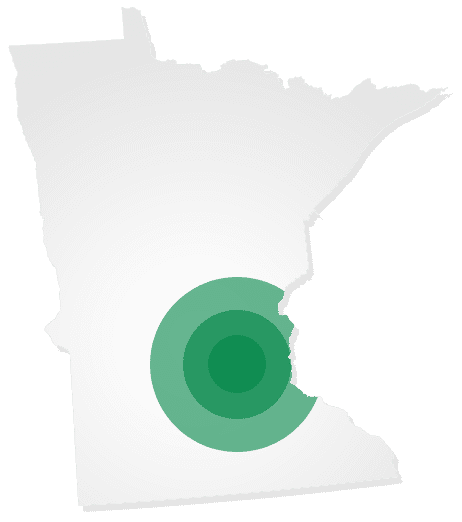Keeping your lawn healthy
Keeping your lawn healthy
Achieving a lush green lawn requires more than just the occasional mowing and watering. Keeping your lawn healthy and green requires attention throughout the growing season such as proper mowing, fertilization, watering, and if necessary, patching and repairs.
Mow
To reduce the stress on your lawn, experts recommend to mow your lawn frequently and to only remove ? of the grass height at a time. So, if your lawn is 3 inches long, you should only be removing 1 inch. When you remove too much of the grass stem, you create too many excess clippings which is harder for your lawn to break down. Remember, some clippings are good to put back into your soil!
Also, it is important to mow your lawn with a sharp blade. This allows a cleaner cut on the grass stems and provides your lawn the ability to recover faster from each mow.
And finally, when mowing, it is important to not mow your lawn too short. Let your grass grow! When you let your grass grow longer, the roots are able to grow long as well. Roots that are deep and well established are more drought resistant than lawns that have shorter roots. In addition, longer grass can cover soil patches in your turf which help enable weeds to grow through them.
Fertilizer and Weed Killers
There are many different variables to consider when thinking about the proper fertilizers and weed killers. Elements such as grass type, soil ph, weed type, and your location are all important things to consider.
Fertilizer and pre-emergent weed killers are most commonly recommended for the early spring months in April and May. Attacking weeds early with pre-emergents, gives them less of a chance to establish long roots, making them harder to get rid of. Fertilizer, on the other hand, only needs to be applied if the lawn hasn’t been fertilized over the previous fall months.
If you are only fertilizing once, fall is the most important time to fertilize. According to the U of MN horticulture department, “Fall fertilization allows nitrogen to be absorbed by the grass while vertical growth is slow. This promotes green-up in the spring without stimulating excessive shoot growth and the need to collect clippings.”
If you are unsure what fertilizer your soil needs, a simple ph test of your soil is the best way to determine what kind you need for your lawn, or fertilization application can be done by a professional lawn care company.
Water
In addition to yearly rainfall, it is important to water your lawn throughout the summer months to keep it looking lush and green. 1-2 inches of water on your lawn a week is typically sufficient for the summer months. An easy way to test how much water your sprinklers are putting out is to put a flat edged pan in your yard and measuring the depth of water after one hour.
Watering your lawn in the morning is the best time to water your lawn. It is less prone to evaporation, there is usually less wind at this time, and water pressure is typically better in the morning. This also gives your lawn a chance to dry out during the day as wet grass is more prone to disease, fungi, and mold if left wet frequently overnight.
Giving your lawn an initial deep watering will also help establish deep root growth. Most experts recommend over 5 inches of water during this water . Any watering additional waterings after the initial watering will fall below the grass root line, helping your grass grow better.
Although using sprinklers to water your lawn in beneficial, an irrigation system offers many benefits if you are serious about maintaining a green lawn. Not only do newer irrigation systems help regulate how much water your lawn needs, but they conserve water better and are able to water your whole lawn at specific times you designate automatically.
Aeration and Overseeding
If your lawn is still in need of some extra care, consider overseeding and aerating your lawn, preferably in the early fall months.
Aerating your lawn is the process of putting small holes throughout your yard to move air, water, and nutrients more efficiently throughout your turf. Benefits of aerating include reducing soil compaction, more efficient waterings, extending your turf’s root growth, helping your lawn regulate temperatures better, and reducing thatch.
Typically, aerating your lawn is best followed up with overseeding although you do not have to aerate your lawn first to seed your lawn. Overseeding is an easy process of layering seeds of grass over your existing lawn without tearing up any soil. Again, this is best done in the fall and will help cover up any patches you may have and reduce the amount of weeds you have by directly competing with them.
Overall, there are many steps that need to be taken in keeping your lawn healthy year round. Mowing, watering, fertilizing and repairing patchy areas are all beneficial to the upkeep of your lawn.
Looking for more information?
Call us today at 763-789-4788 to receive a free estimate on any of our property services.
Free Estimates
on all Services
Use the form below to request a free estimate on any of our services.






